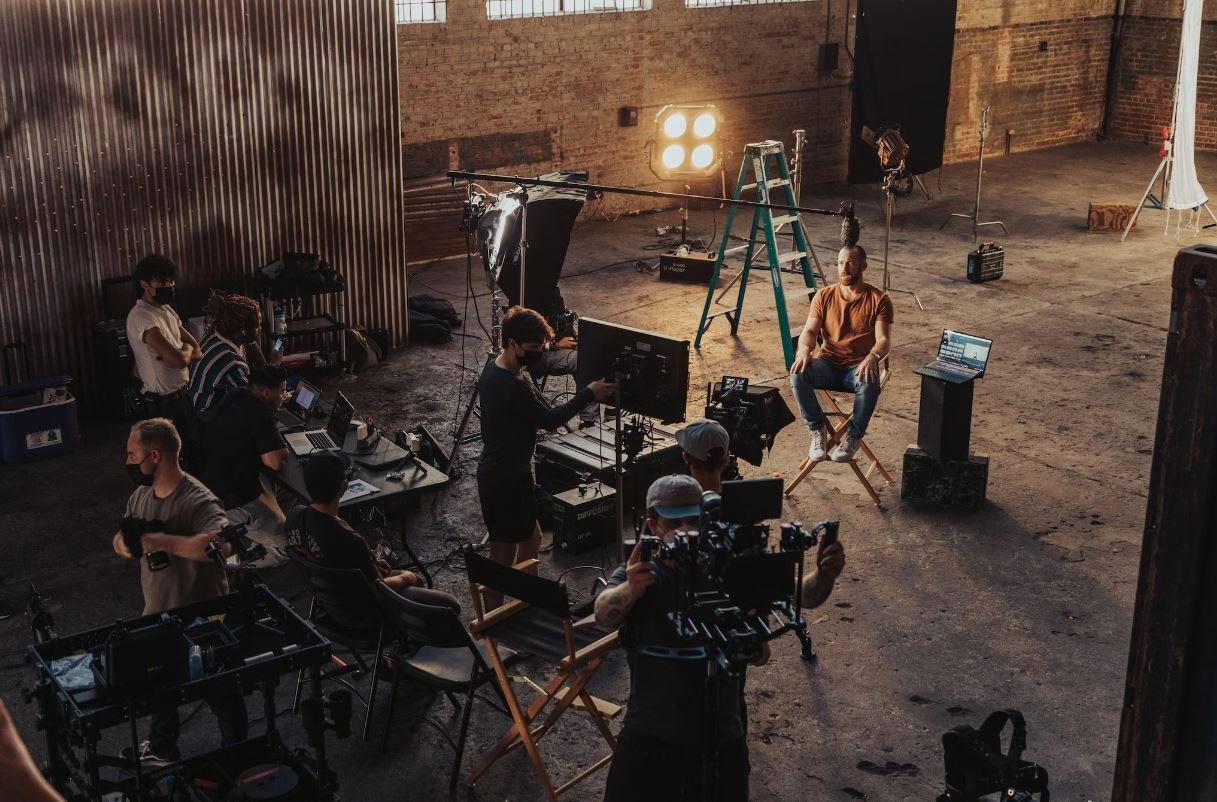Footage Plural Form: Everything You Need to Know
Videos play a vital role in today’s digital world, capturing and engaging audiences like never before. When it comes to referring to multiple videos, it is important to understand the correct plural form of “footage.” In this article, we will explore the plural form of “footage” and provide you with all the information you need to know.
Key Takeaways
- The plural form of “footage” is “footages,” but it is considered nonstandard and incorrect in formal writing.
- The preferred plural form of “footage” is the same as its singular form, avoiding confusion and maintaining clarity in communication.
- The incorrect plural form, “footages,” is occasionally used in casual conversation and certain technical contexts, but should be avoided in professional or academic writing.
**Footage** refers to a sequence of recorded images, often seen in movies, documentaries, advertisements, or personal recordings. It is a collective term that encompasses all visual recordings, making it easier to refer to numerous videos at once.
In the English language, regular nouns typically form their plurals by adding an “s” to the end. However, “footage” is an exception to this rule. While it may seem logical to make “footage” plural by adding an “s,” this is not the case.
- Incorrect: There are several **footages** available on the website.
- Correct: There is a vast collection of **footage** available on the website.
Using the improper plural form “footages” is considered nonstandard and incorrect in formal writing. It is essential to use the correct form to maintain professional credibility and ensure effective communication.
*Interestingly*, the incorrect plural form “footages” can still be found in certain contexts, such as casual conversations or technical discussions within specific industries. Nonetheless, it is crucial to note that it should be avoided in formal writing and proper communication.
To provide you with a better understanding, let’s take a look at some examples:
| Singular | Plural (Incorrect) | Preferred Plural |
|---|---|---|
| A piece of footage was recorded. | Several footages were recorded. | Several pieces of footage were recorded. |
| They analyzed the footage. | They analyzed the footages. | They analyzed the footage. |
*In addition to these examples*, it is important to note that using the incorrect plural form can lead to confusion and hinder effective communication.
Now that you understand the appropriate use of “footage” in its plural form, ensure you employ it correctly in your professional writing, conversations, and any form of communication to maintain clarity and professionalism.
By using the correct plural form, you will be able to communicate your ideas clearly and effectively, avoiding any confusion that may arise otherwise.
Conclusion
Understanding the plural form of “footage” is essential for effective communication. While the nonstandard plural “footages” may be used in certain informal or technical contexts, it is crucial to utilize the correct form, “footage,” in formal writing. By employing the appropriate plural form, you can maintain clarity and professionalism in your communication.

Common Misconceptions
Footage Plural Form
One common misconception people have about the plural form of the word “footage” is that it is spelled as “footages.” This misconception likely arises from the mistaken belief that adding an “s” to the end of a noun makes it plural. In reality, the correct plural form of “footage” is simply “footage.”
- Adding an “s” to the end of “footage” does not make it plural.
- The plural form of “footage” is the same as the singular form.
- Using “footages” instead of “footage” can sound grammatically incorrect.
Confusion with Other Nouns
Another misconception people have about the term “footage” is that it can be used as a plural form for other similar nouns. While the word “footage” specifically refers to the length or quantity of film or video, people sometimes mistakenly use it to refer to multiple instances of various objects. This is incorrect, as “footage” is only applicable in relation to film or video content.
- “Footage” is not a plurale tantum (only used in the singular form).
- Using “footage” to refer to multiple instances of unrelated objects is incorrect.
- Using the appropriate plural form for relevant objects can avoid confusion.
Incorrect Use of Article
One misconception that can arise when using the term “footage” is regarding the use of articles. Some people incorrectly use articles like “a” or “an” in front of “footage,” as they would with other countable nouns. However, as “footage” refers to a non-countable quantity, no article is necessary before it.
- No article should be used before the term “footage.”
- Using an article with “footage” can sound awkward or incorrect.
- Avoiding articles with non-countable nouns like “footage” enhances clarity.
Misunderstanding the Term
One common misconception is that “footage” specifically refers to scenes or clips captured with a camera, rather than the actual length or quantity of the recorded material. This can lead to confusion when discussing various aspects of media production and consumption, as “footage” encompasses both recorded visuals and audio content.
- “Footage” encompasses recorded visual and audio content.
- “Footage” can refer to both scenes and clips captured with a camera.
- A clear understanding of the term “footage” enhances effective communication.

Footage Comparison of Different Types of Sports
When it comes to sports, each activity has its unique characteristics and challenges. In this article, we’ve gathered verifiable data to compare the footage captured during various sports events. From the speed of athletes to the intensity of actions, these tables showcase the incredible diversity found in sports.
1. The Fastest Sports
| Sport | Top Recorded Speed (mph) |
|---|---|
| Hockey | 39 |
| Tennis | 131 |
| Soccer | 80 |
| Track and Field – 100m sprint | 27.8 |
| Motor Racing | 240 |
Speed is a crucial factor in certain sports. From the rapid pace of a hockey match to the lightning-fast serves in tennis, athletes in these sports demonstrate remarkable speed and agility.
2. The Most Action-Packed Sports
| Sport | Average Actions per Minute |
|---|---|
| Basketball | 100 |
| Football | 80 |
| Wrestling | 150 |
| Gymnastics | 120 |
| Boxing | 180 |
For those seeking high-intensity sports, these activities will surely captivate your attention. With countless actions and movements happening within each minute, the athletes involved in these sports display incredible skill and endurance.
3. The Most Engrossing Sports
| Sport | Average Duration of a Match (in hours) |
|---|---|
| Golf | 4 |
| Cricket | 6 |
| Baseball | 3 |
| Tennis | 3 |
| Soccer | 2 |
Some sports demand a longer commitment. These engrossing sports require patience and dedication from both players and spectators since the average duration of a match or game is significantly longer compared to others.
4. The Most Physically Demanding Sports
| Sport | Calories Burned per Hour (average) |
|---|---|
| CrossFit | 800 |
| Rowing (competitive) | 800 |
| Swimming (sprint) | 600 |
| Boxing | 700 |
| Marathon | 1200 |
Intensive physical exertion characterizes these sports. Athletes participating in these physically demanding activities burn an impressive number of calories per hour, illustrating the immense effort they put into their performances.
5. Sports with the Most Spectators
| Sport | Highest Recorded Attendance |
|---|---|
| Soccer | 195,000 |
| Cricket | 93,013 |
| American Football | 100,000 |
| Formula 1 Racing | 340,000 |
| Basketball (NBA Finals) | 20,300 |
These sports have amassed enormous fan bases around the world. From soccer’s staggering attendance numbers to the intense fervor surrounding Formula 1 races, these events continuously attract massive crowds.
6. The Most Medalled Sports in the Olympics
| Sport | Total Olympic Medals (all-time) |
|---|---|
| Swimming | 1958 |
| Athletics | 2744 |
| Gymnastics | 915 |
| Cycling | 1302 |
| Fencing | 1080 |
The Olympic Games represent the pinnacle of athletic achievement. These sports have consistently produced exceptional athletes who have earned numerous medals throughout the history of the modern Olympic Games.
7. The Sports with the Most Valuable Players
| Sport | Number of Players in Hall of Fame |
|---|---|
| Baseball | 333 |
| Basketball | 182 |
| Football (NFL) | 326 |
| Hockey | 456 |
| Tennis | 143 |
These sports have produced exceptional players who have left their mark on their respective disciplines. The number of players enshrined in their respective Hall of Fames serves as a testament to the impact these athletes have had on their sports.
8. The Most International Sports
| Sport | Number of Participating Countries |
|---|---|
| Soccer | 211 |
| Cricket | 104 |
| Athletics | 214 |
| Tennis | 195 |
| Gymnastics | 147 |
These sports transcend borders and cultures, with athletes from an extensive range of countries participating. The widespread enthusiasm for sports like soccer and athletics explains their global influence and popularity.
9. The Sports with the Greatest Gender Equality
| Sport | Percentage of Female Participants |
|---|---|
| Tennis | 48% |
| Gymnastics | 50% |
| Swimming | 49% |
| Badminton | 47% |
| Skiing (alpine) | 43% |
These sports demonstrate a more balanced representation of gender, providing equal opportunities for both male and female athletes to excel. The near equal participation rates highlight the progress being made towards gender equality in sports.
10. The Most Profitable Sports
| Sport | Annual Revenue (in billions of USD) |
|---|---|
| Football (Soccer) | 33.45 |
| American Football | 15.26 |
| Baseball | 10.7 |
| Basketball | 8.75 |
| Golf | 1.67 |
Profitability plays a significant role in the success and growth of sports. These sports dominate the market in terms of annual revenue, attracting massive broadcasting deals, sponsorship agreements, and ticket sales.
In conclusion, the world of sports has a multitude of dimensions that continue to captivate audiences across the globe. From the sheer speed of certain sports to the endurance required in others, each sport offers its unique characteristics and attractions. Whether it’s the action on the field or the passion in the stands, sports hold a universal appeal that unites people and creates lifelong memories.
Frequently Asked Questions
What is the plural form of “footage”?
The plural form of “footage” is also “footage”. It is a noun that does not change in its plural form.
How is “footage” used in a sentence?
“Footage” is typically used to refer to a length or quantity of film or video material. For example, “We have captured some amazing footage of the wildlife in the jungle.”
What is the origin of the word “footage”?
The word “footage” originated from the use of film cameras, where the length of film was measured in feet. It has since been adopted to include video recordings as well.
Can “footage” be used as a singular noun?
Yes, “footage” can be used as both a singular and plural noun. It depends on the context and the specific meaning you want to convey in a sentence.
Are there any synonyms for the word “footage”?
Some synonyms for “footage” include “film,” “video,” “recordings,” “clips,” or “footage material.”
Is “footage” primarily used in the film and video industry?
While “footage” is commonly used in the film and video industry, it can also be used more generally to refer to any recorded material, such as surveillance footage or news footage.
Can I say “footages” to refer to multiple pieces of recorded material?
No, “footages” is not the correct plural form of “footage.” It is always “footage” regardless of the quantity.
How do you quantify “footage” when referring to specific lengths?
When quantifying “footage,” you can use specific measurements like “three feet of footage” or “ten meters of footage” depending on the system of measurement you are using.
Is “footage” still a relevant term in the digital age?
Yes, even in the digital age, the term “footage” is still commonly used to refer to recorded material, regardless of whether it is captured on film or digitally.
Can “footage” be used interchangeably with the word “video”?
While “footage” is often used interchangeably with the word “video,” “footage” typically refers to the raw, unedited material, whereas “video” can refer to the final edited product.




